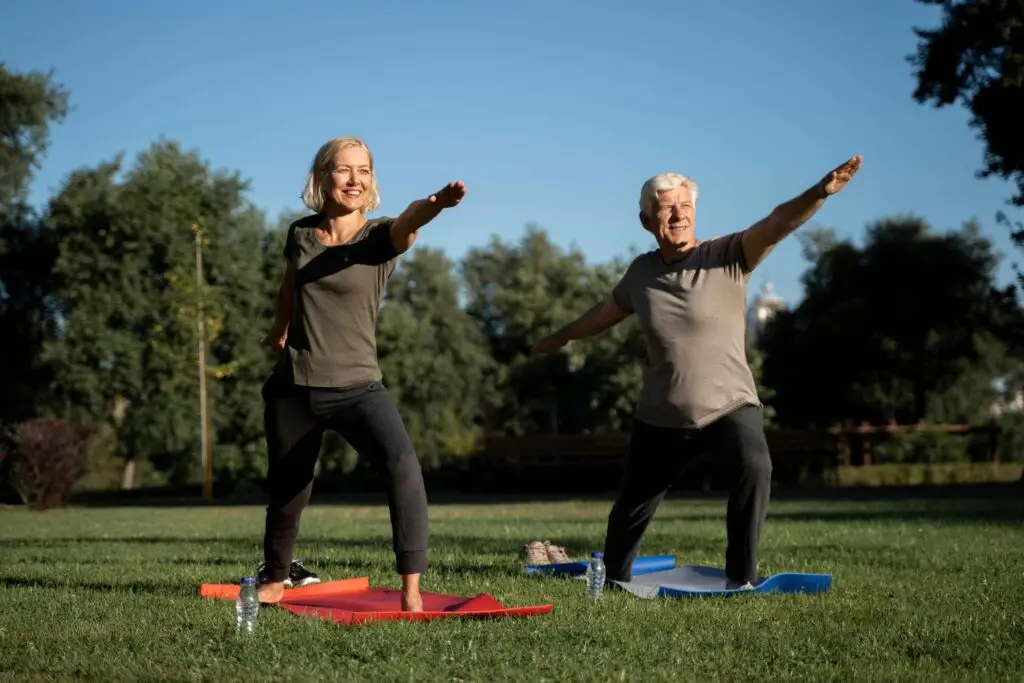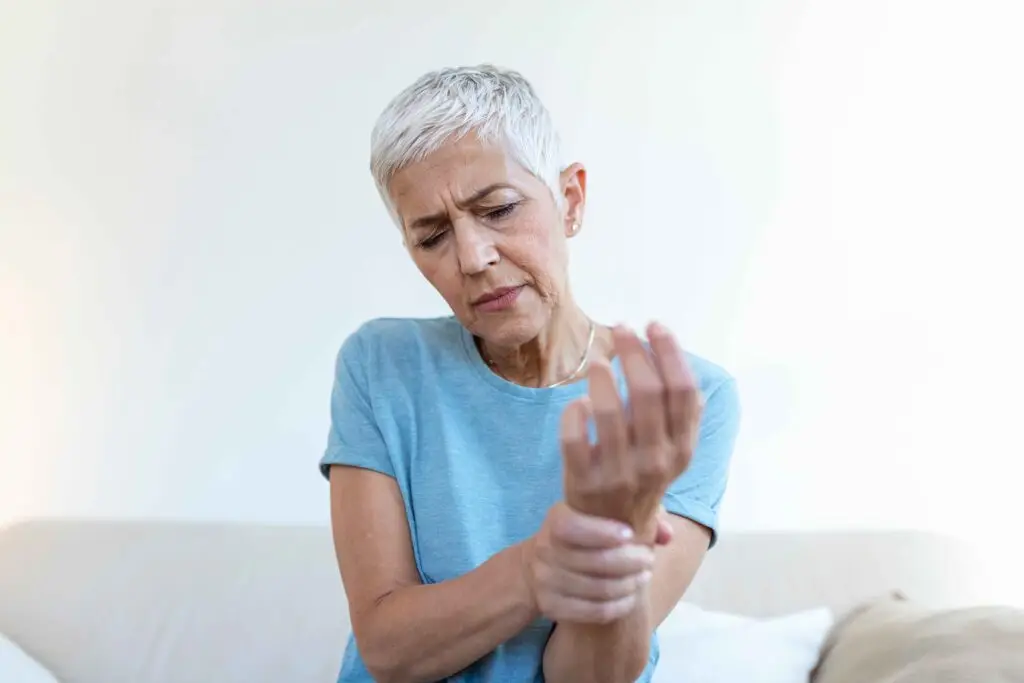The Role of Vitamin D in Senior Health
Healthy aging is built on strong nutrition. While many vitamins and minerals are essential, vitamin D holds a unique place in senior health. It plays a crucial role in bone strength, muscle performance, and the body’s natural defenses.
Without this nutrient, the body cannot properly absorb calcium and phosphorus, leading to weaker bones and a greater risk of fractures. Seniors with low levels often experience muscle weakness, fatigue, and increased vulnerability to infections.
By the time an older adult reaches 70 years, the body’s ability to produce vitamin D from sunlight decreases sharply. Thinner skin, less outdoor activity, and chronic health conditions add to the challenge.
Because deficiency often develops silently, it may only be discovered after fractures or illness appear. To prevent this, experts recommend a combined approach: eating foods rich in vitamin D, choosing fortified products, safe sun exposure, daily supplementation, and routine blood tests to monitor status.
Why Vitamin D Matters for Older Adults
Vitamin D is often called the “sunshine vitamin,” but its benefits go far beyond bones. Once converted into its active form, it regulates how the body absorbs and uses calcium and phosphorus, which keep bones dense and resilient.
Without enough, bones become fragile even with a calcium-rich diet. This is why the connection between vitamin D and calcium is central in preventing osteoporosis.

But the impact does not stop there. Vitamin D binds to receptors in muscle fibers, immune cells, and the brain, influencing balance, strength, immune health, and even mood. Adequate levels help reduce the risk of fractures, falls, and longer recovery periods after illness.
For seniors, who face an increased risk of deficiency, maintaining healthy levels is essential for independence and vitality.
How Aging Reduces Natural Vitamin D Production?
In younger adults, sunlight provides most of the body’s vitamin D. When UVB rays reach the skin, the nutrient is synthesized naturally. With age, this process becomes less efficient. By age 70, skin production is cut almost in half compared to earlier life.
Lifestyle factors make the issue worse. Many seniors spend less time outdoors because of mobility challenges, chronic health conditions, or personal habits.
Those living in northern regions face added difficulties during the winter months. Even in sunny climates, testing often reveals low levels, showing that sunlight alone is not enough to maintain healthy vitamin D status in later life.
The Role of Vitamin D in Senior Health: Bones, Muscles, Immunity, and the Mind
Vitamin D and Bone Health
Bones are constantly breaking down and rebuilding in a cycle called bone remodeling. Vitamin D ensures this process stays effective by enabling the absorption of calcium and phosphorus. Without enough, the body draws calcium from bones to keep blood levels stable, gradually weakening the skeleton.
For an older adult, the consequences are serious. After 70 years, bone density naturally declines, and women face sharper bone loss after menopause due to lower estrogen. Without healthy vitamin D levels, this natural decline accelerates, increasing the risk for osteoporosis and fractures.
Osteoporosis is not just a diagnosis—it is one of the most common age-related diseases. Fractures can occur from minor falls or daily movements. Hip fractures are particularly dangerous, often requiring surgery, lengthy rehabilitation, and sometimes resulting in loss of independence.
Maintaining strong vitamin D status, combined with calcium, is one of the most effective strategies to reduce the risk of fractures. Doctors often prescribe both together, since vitamin D allows calcium to be absorbed effectively.
Research shows that seniors with healthy amounts of vitamin D have denser bones and fewer fractures than those who are deficient.
In short, vitamin D plays a crucial role in bone health. It ensures that calcium is not wasted, keeps bones strong, and helps seniors maintain mobility and quality of life over the long term.
Muscle Function and Fall Prevention
Falls are among the greatest threats to older adults. They are one of the leading causes of hospital stays, disability, and loss of independence worldwide. Even minor slips can result in fractures or long-term recovery.
Vitamin D is directly tied to this issue because of its role in muscle tissue. Muscles contain specific receptors that respond to the nutrient once it is in its active form. This interaction supports contraction, coordination, and overall strength.
When levels are too low, the signs begin subtly—fatigue, slower reflexes, or a sense of instability. Over time, muscle weakness becomes more noticeable. Everyday activities such as climbing stairs or rising from a chair can become difficult, which raises the likelihood of falling.
Research supports the connection: seniors who maintain steady amounts of vitamin D show improved balance, stronger muscles, and fewer fall-related injuries. Supplementation, combined with regular exercise, provides one of the most effective safeguards against falls. For an older adult wanting to remain independent, vitamin D offers strength and stability for the long term.
Immune System and Illness Prevention
The immune system naturally weakens with age, making seniors more prone to infections. Vitamin D supports the body’s defenses by activating white blood cells that target harmful bacteria and viruses.
When vitamin D status is low, the immune response is weaker, and illnesses such as influenza or pneumonia can be more severe and last longer.
During the COVID-19 pandemic, research highlighted the importance of this nutrient. Seniors with healthy levels often experienced milder symptoms and better recovery outcomes than those who were deficient.
While vitamin D is not a cure, it plays a crucial role in boosting resilience and lowering illness severity.
Low levels are also linked to higher inflammation throughout the body. Chronic inflammation increases the long-term risk of diseases such as diabetes and cardiovascular conditions.
Maintaining adequate intake through diet, safe sun exposure, or nutritional supplements helps build daily protection and strengthens immunity in later life.
Mental Health and Cognitive Function
Vitamin D not only influences physical health—it also affects the brain. Receptors in nerve cells respond to this nutrient, helping regulate neurotransmitters that control mood, memory, and behavior.
For seniors, healthy levels may mean more emotional stability. Deficiency has been linked to depression, mood swings, and lower energy. Older adults with low status are more likely to experience sadness or withdraw from social activities. Correcting deficiency through diet or daily supplementation can help restore balance.
Cognitive health is another area of concern. Studies suggest that seniors with low levels may face an increased risk of memory loss or dementia.
Researchers believe vitamin D protects brain cells by reducing inflammation and improving blood flow. While more studies are needed, evidence already points to its importance for mental clarity.
In short, maintaining steady amounts of vitamin D is essential not just for bones and muscles, but for emotional well-being and sharp thinking. For seniors, this nutrient supports independence and quality of life well beyond the physical body.
Vitamin D Deficiency: A Common Risk in Seniors
Deficiency is widespread among older adults, with multiple causes:
- Age-related decline: After 70 years, the skin produces far less vitamin D from sunlight.
- Limited outdoor activity: Many seniors spend more time indoors due to health conditions or mobility issues.
- Dietary gaps: Few foods naturally contain vitamin D, and fortified products may not fully cover daily needs.
- Chronic illness and medication: Kidney or liver problems reduce conversion into the active form, and some medicines interfere with absorption.
The health consequences are wide-ranging. Severe deficiency can lead to osteomalacia, which softens bones and causes pain. More commonly, seniors face muscle weakness, fatigue, frequent infections, and an increased risk of falls.
Over the long term, low levels are linked to osteoporosis, diabetes, cardiovascular disease, autoimmune issues, and even cognitive decline.

Testing Vitamin D Status
Because deficiency often develops silently, routine monitoring is critical. The best measure is a blood test of serum 25-hydroxyvitamin D, which reflects both diet and sunlight exposure.
| Blood Level (ng/mL) | Status | Health Implications |
|---|---|---|
| Below 20 | Deficient | Higher risk of fractures, infections |
| 20–30 | Insufficient | May cause bone and muscle problems |
| 30–50 | Healthy | Considered an optimal range for seniors |
Doctors often recommend regular testing for those with limited sun exposure or chronic conditions. Monitoring ensures intake adjustments can be made before problems worsen.
It also prevents over-supplementation, since high doses taken over the long term can lead to kidney stones, nausea, or irregular heart rhythms.
How Much Vitamin D Do Seniors Need?
Daily intake depends on age:
- Adults up to 70 years: 600 IU per day.
- Adults over 70: 800 IU per day.
- Safe upper limit for adults: 4,000 IU daily,
These values reflect the amounts of vitamin D needed to maintain strong bones, healthy muscles, and a resilient immune system.
Seniors with very low levels may require higher short-term doses under medical guidance. Consistently meeting daily needs helps reduce the risk of fractures, infections, and other complications.
Food Sources of Vitamin D
| Category | Examples | Notes |
| Natural Sources | Fatty fish (salmon, sardines, mackerel) | The richest natural source |
| Cod liver oil | Extremely rich, best in moderation | |
| Eggs | Reliable, everyday option | |
| Beef liver and cheese | Small but useful amounts | |
| Fortified Foods | Milk and plant-based alternatives (often enriched) | Widely available |
| Fortified orange juice | Common breakfast option | |
| Breakfast cereals (paired with milk) | Practical for daily intake | |
| Margarine and spreads | Often enriched with vitamin D |
For seniors, combining natural and fortified foods is the most practical way to improve intake. Still, after 70 years, diet alone may not be enough, making supplements and safe sunlight important partners.
When to Consider Supplements
Since diet and sunlight are rarely sufficient on their own, supplementation is often needed. Tablets, capsules, drops, or multivitamins provide reliable intake, especially for those with chronic illnesses or limited mobility.
Supplements are safe for long-term use under professional guidance. Many doctors recommend combining them with calcium since vitamin D and calcium work in synergy.
Without enough vitamin D, calcium cannot be absorbed properly, leaving bones vulnerable. Together, they offer one of the best ways to reduce the risk of osteoporosis, fractures, and muscle weakness.
Practical Ways to Boost Daily Intake
Seniors can take simple, consistent steps to improve vitamin D status:
- Include fatty fish in two meals each week.
- Start mornings with fortified cereal and milk or plant-based alternatives.
- Add eggs to the diet several times per week.
- Choose fortified spreads or juices.
- Spend short periods outdoors in safe sunlight.
Because the skin produces less vitamin D after 70 years, relying on sunlight alone is not enough. A combined strategy of diet, supplements, and outdoor activity ensures steady intake over the long term.
Conclusion
The Role of Vitamin D in Senior Health goes far beyond bone support. This nutrient ensures proper absorption of calcium and phosphorus, strengthens skeletal density, and helps protect against muscle weakness that often leads to falls. It also fuels the body’s natural defenses, lowering the chance of severe infections, and supports mood and cognitive sharpness as the years progress.
For an older adult, the risks of deficiency are too serious to overlook. After the age of 70 years, the body’s natural production declines sharply, and diet alone rarely provides enough. Without awareness and prevention, the likelihood of fractures, fatigue, and long-term illness rises significantly.
The best approach is layered: routine blood tests to monitor levels, foods naturally rich in the sunshine vitamin, fortified products, safe sun exposure, and daily supplementation when needed. This strategy maintains a steady nutrient balance without the danger of overload.
Meeting the recommended intake—600 IU for most adults and 800 IU for those over 70—offers a reliable way to reduce the risk of bone loss, infections, and chronic complications. Seniors who stay consistent with their intake can preserve mobility, independence, and emotional well-being.
Healthy aging is not about resisting change but about managing it wisely. By making this nutrient a priority, older adults give themselves a powerful ally for resilience, confidence, and vitality in the years ahead.





